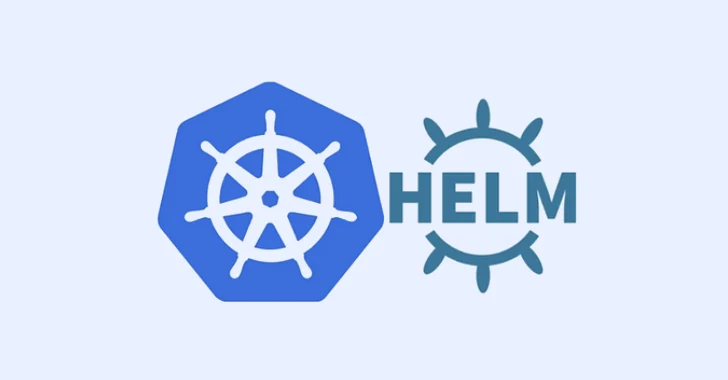
Introduction
Magicorn’s Helm charts represent a comprehensive solution for deploying containerized applications on Kubernetes. Built through extensive production experience, these charts provide a structured approach that balances flexibility with operational best practices. This documentation covers architecture decisions, implementation patterns, and advanced configuration options for teams deploying business-critical applications.
Architecture Overview
This is a versatile Helm chart designed to deploy generic service applications on private Kubernetes platforms. While it was primarily developed for AWS, integrating seamlessly with AWS Elastic Kubernetes Service and the AWS ALB Ingress Controller, it also supports deployment on Huawei Cloud as well as on-premises or alternative cloud environments.
The deployment section is mandatory when using this Helm chart, as it defines how your application runs on Kubernetes. All other templates such as service, ingress, autoscaling, etc., are optional and can be enabled or disabled via values.yaml depending on your needs.
Configuration Hierarchy
The `values.yaml` file is the heart of the chart’s customization and defines the deployment configuration hierarchy for various components:
├── deployment / Application containers
├── service / Network exposure
├── ingress / External access
├── autoscaling / Dynamic scaling
├── configmap / Mount external ConfigMaps
├── prehooks / Pre‑deployment tasks
├── cronjobs / Batch processing
├── security / Access controls
└── pvc / Persistent storage
Detailed Configuration Guide
1. Deployment Specifications
destination: aws # choose AWS | HCP | Azure | Datacenter
deployment:
image:
uri: __INSERTURIHERE__
pullPolicy: IfNotPresent
imagePullSecrets: []
env:
- name: foo
value: bar
replicaCount: 1
resources:
requests:
cpu: 250m
memory: 1Gi
limits:
memory: 1Gi
readiness:
httpGet:
port: one
path: /healthz
initialDelaySeconds: 15
periodSeconds: 15
failureThreshold: 2
successThreshold: 1
timeoutSeconds: 5
liveness:
httpGet:
port: one
path: /healthz
initialDelaySeconds: 30
periodSeconds: 15
failureThreshold: 2
successThreshold: 1
timeoutSeconds: 5
podAnnotations:
cluster-autoscaler.kubernetes.io/safe-to-evict: 'true'
strategy:
type: RollingUpdate
rollingUpdate:
maxSurge: 1
maxUnavailable: 0
lifecycle:
preStop:
exec:
command: ["/bin/bash", "-c", "sleep 60"]
deregistrationTime: 60
failSeconds: 600
revisionHistory: 25
nodeSelector: {}
tolerations: []
affinity: {}
Key Features:
- Image & pullPolicy
Use IfNotPresent locally and CI-friendly registries; switch to Always in dev/test if you push images on the same tag. imagePullSecrets lets you reference private‐registry credentials.
- Environment variables
Define any API keys or feature flags here. If you have many, consider mounting them via ConfigMap or Secret instead.
- Replica count vs. HPA
replicaCount is your static baseline; once autoscaling.enabled: true, HPA will control pod counts instead.
- Resource requests/limits
Requests reserve capacity; limits prevent runaway memory use. We omit CPU limits by default to avoid pods being throttled.
- Health checks
Readiness (/healthz) gates traffic until your app returns 200. Liveness (/healthz) restarts hung pods. We delay probes (~15 s for readiness, 30 s for liveness) to give the app time to boot, and retry a couple of times before declaring failure.
- Pod annotations
Mark pods “safe to evict” for cluster autoscaler so they can be gracefully removed when scaling down and if one of the deployments are so crucial for you to not move around a lot (at least by cluster autoscaler) mark it safe-to-evict: false.
- Rolling update
maxSurge: 1 ensures only one extra pod spins up while the old one is terminating, keeping availability at 100%.
- Lifecycle hooks
preStop: sleep 60 gives any in‑flight requests time to finish before the container SIGTERM arrives.
2. Service
service:
enabled: true
annotations: {}
type: ClusterIP # or NodePort | LoadBalancer
ports:
one:
inner: 80
outer: 80
two:
inner: 443
outer: 443
Type choices
- ClusterIP (default): internal only.
- NodePort: exposes a port on each node; good for simple on‑prem load balancers.
- LoadBalancer: provisions a cloud LB (e.g. AWS NLB/ELB).
Annotations
Usually used for third party ingress controllers, like nginx or HAProxy, etc. When the deployment destination is not datacenter, there usually built-in annotations integrated. You can add more annotations on your choice.
Ports map
Naming ports (one, two) decouples code changes from service definitions—just point your app at port name one.
3. Ingress
ingress:
- enabled: true
annotations: {}
className: null
idleTimeout: 60
scheme: internet-facing
certificateId: arn:aws:acm:…
wafId: null
sslPolicy: ELBSecurityPolicy-TLS13-1-2-2021-06
lbId: externalloadBalancerNameHere
lbOrder: 100
hosts:
- host: hostname.example
paths:
- path: /
pathType: Prefix
Multiple entries
You can define both public and private ingresses by toggling enabled and changing scheme.
Annotations
For AWS ALB: add alb.ingress.kubernetes.io/target-type: ip or cert-manager.io/cluster-issuer here.
LB settings
idleTimeoutcontrols how long connections stay open.lbOrdersets rule priority if multiple ingresses overlap.
Certificates
Use ACM ARNs for TLS; if you use cert-manager instead, set certificateId: null and configure annotations.
4. Autoscaling
autoscaling:
enabled: false
minReplicas: 2
maxReplicas: 100
targetCPUUtilizationPercentage: 40
behavior:
scaleUp:
stabilizationWindowSeconds: 60
selectPolicy: Max
policies:
- type: Pods
value: 4
periodSeconds: 60
scaleDown:
stabilizationWindowSeconds: 300
selectPolicy: Min
policies:
- type: Percent
value: 25
periodSeconds: 60
HPA basics
Enables Kubernetes HorizontalPodAutoscaler; pods spin up when CPU > 40%, back down when below.
Scaling policies
- scaleUp: at most 4 pods per minute.
- scaleDown: at most 25% of pods per minute, with a 5‑minute cooldown to avoid flapping.
Metrics
Both CPU and Memory metrics are supported.
5. ConfigMap Mount
configMap:
enabled: false
name: configMapName
fileName: .env.prod
mountPath: /var/www/html
When to use
Ideal for environment‑specific settings, feature toggles, or secrets (though Secrets are preferred for sensitive data).
mountPath
Files from the ConfigMap appear under the given directory; fileName controls the filename in the pod.
6. Pre‑hooks
prehooks:
dbMigrations:
enabled: false
command: ["/usr/local/bin/python"]
args: ["manage.py", "migrate", "--noinput"]
otherPrehooks:
enabled: false
command: ["/usr/local/bin/python"]
args: ["manage.py", "some_action_here"]
- Order
dbMigrationsalways runs first if enabled, thenotherPrehooks. It applies any pending Django (or similar) database migrations so your schema is up‑to‑date before new code lands. - Failure behavior
If any hook fails, the deployment will abort, so please use with caution in CI/CD pipelines.
7. CronJobs
cronjobs:
- name: cron1
enabled: false
schedule: "* * * * *"
command: ["/usr/local/bin/php"]
args: ["artisan", "schedule:run"]
resources:
requests:
cpu: 50m
memory: 256Mi
limits:
memory: 256Mi
failedJobsHistoryLimit: 3
successfulJobsHistoryLimit: 5
concurrencyPolicy: Forbid
restartPolicy: OnFailure
ConcurrencyPolicy
- Forbid: skip new runs if prior job is still active.
- Allow: let multiple overlap.
- Replace: kill the old job and start a new one..
History limits
Control how many past jobs are retained for debugging
8. Security
security:
serviceAccount:
enabled: false
annotations: {}
clusterWideAccess: false
rules:
- resources: ["configmaps","events","pods","pods/exec","secrets","services"]
verbs: ["get","list","watch","create","patch","update","delete"]
sgPolicy:
enabled: false
securityGroupId: sg-0123456789abcdef
podSecurityContext: {}
securityContext: {}
- ServiceAccount & RBAC
Enable this to grant your pods specific API permissions (e.g. to read Secrets or exec into other pods). - AWS Security Groups
If you use the AWS VPC CNI, you can attach ENIs to pods via SGPolicy—set up the SG externally, then reference it here. - Security contexts
UsepodSecurityContextor per‑containersecurityContextto enforce non‑root, read‑only root filesystem, capabilities drop, etc.
9. PVC
pvc:
enabled: false
mountPath: /efs/test
subPath: test
size: 100Gi
accessModes:
- ReadWriteMany
storageClass: azurefile-csi
- Use case
- Stateful applications that need shared storage (e.g. CMS uploads, batch data processing).
Access Modes
- ReadWriteOnce: single‑node attach.
- ReadWriteMany: multi‑attach (Azure Files, EFS).
- StorageClass
Points to the CSI driver (e.g. azurefile-csi for Azure Files, efs.csi.aws.com for EFS).
Environment-Specific Configuration
Use separate values files to tailor your deployment to each environment (e.g. development, staging, production). For example:
helm upgrade --install \
--create-namespace \
<service_name> \
oci://public.ecr.aws/magicorn/charts-deployment \
-f "<values_path>/<values-name>" \
-n "<name_space>" \
--set deployment.image.uri=$(cat "$CODEBUILD_SRC_DIR_BuildArtifact/imagedefinitions.txt") \
--version "$CHART_VERSION"
For production support inquiries, please contact su*****@******rn.co
Resources:


